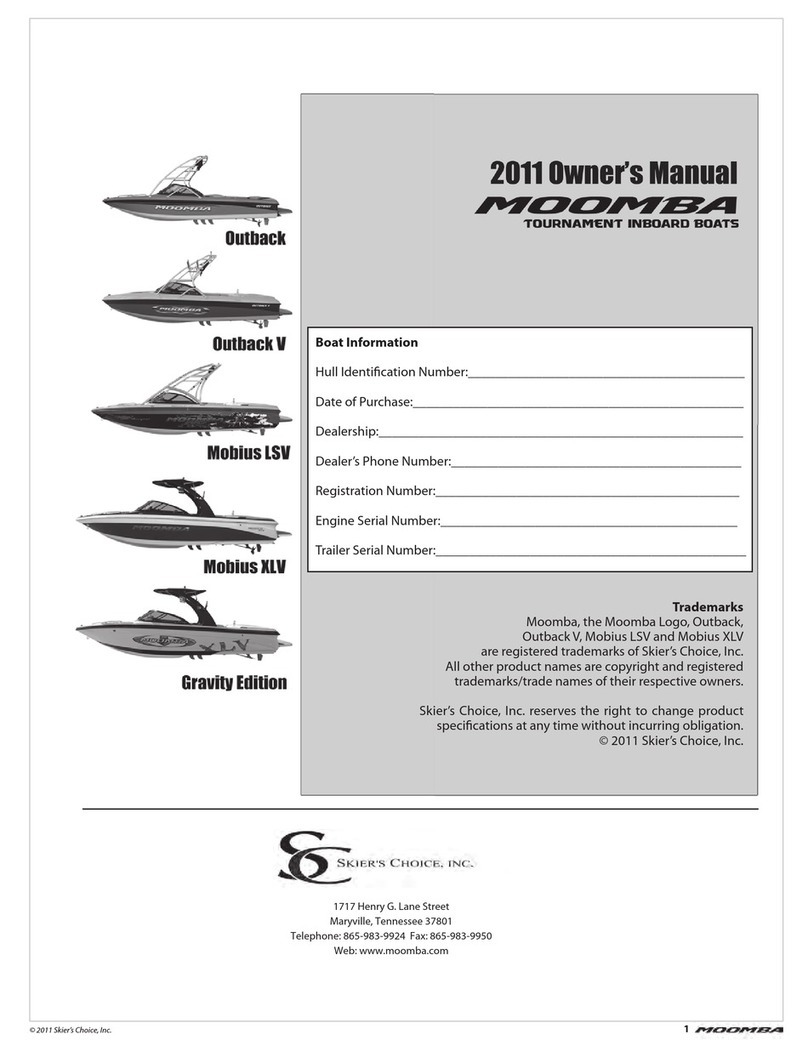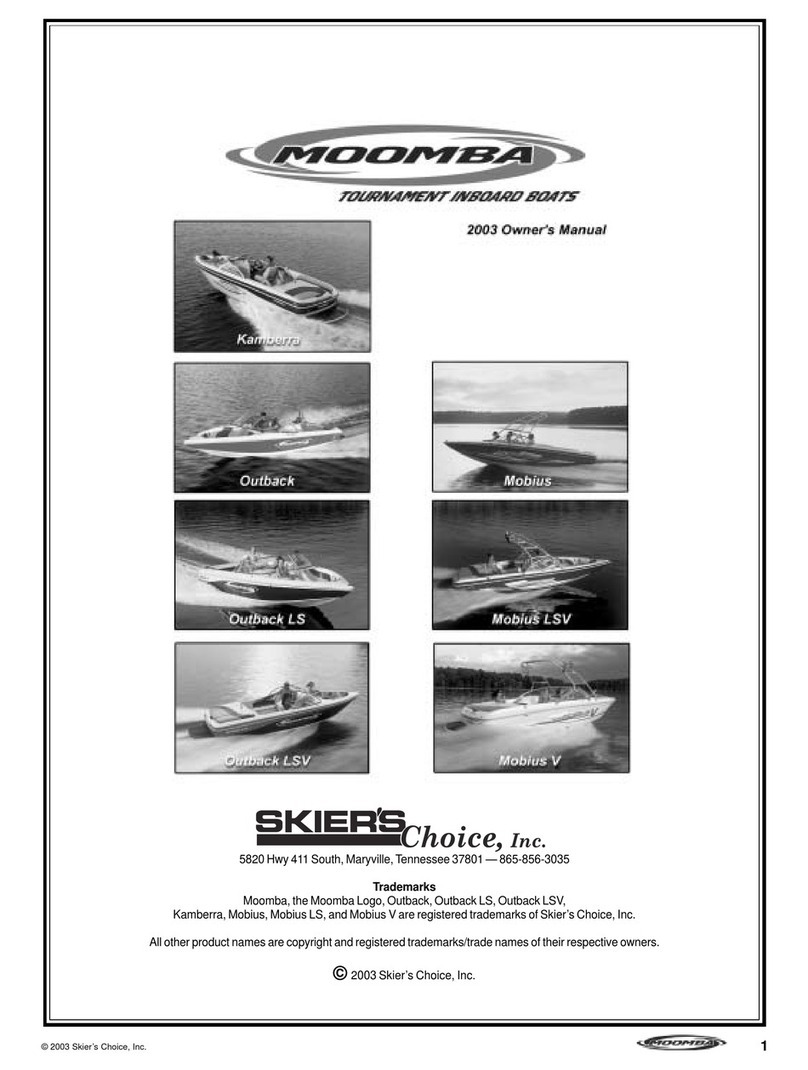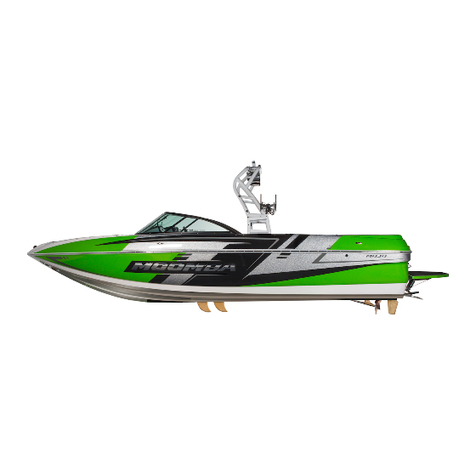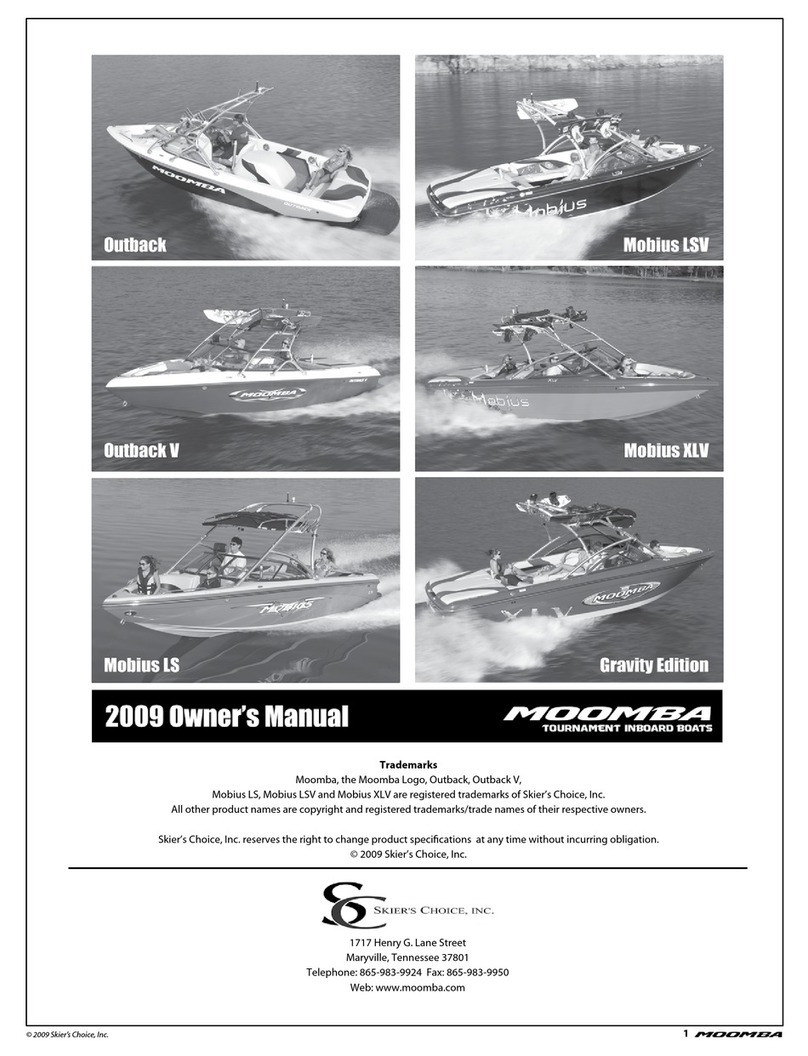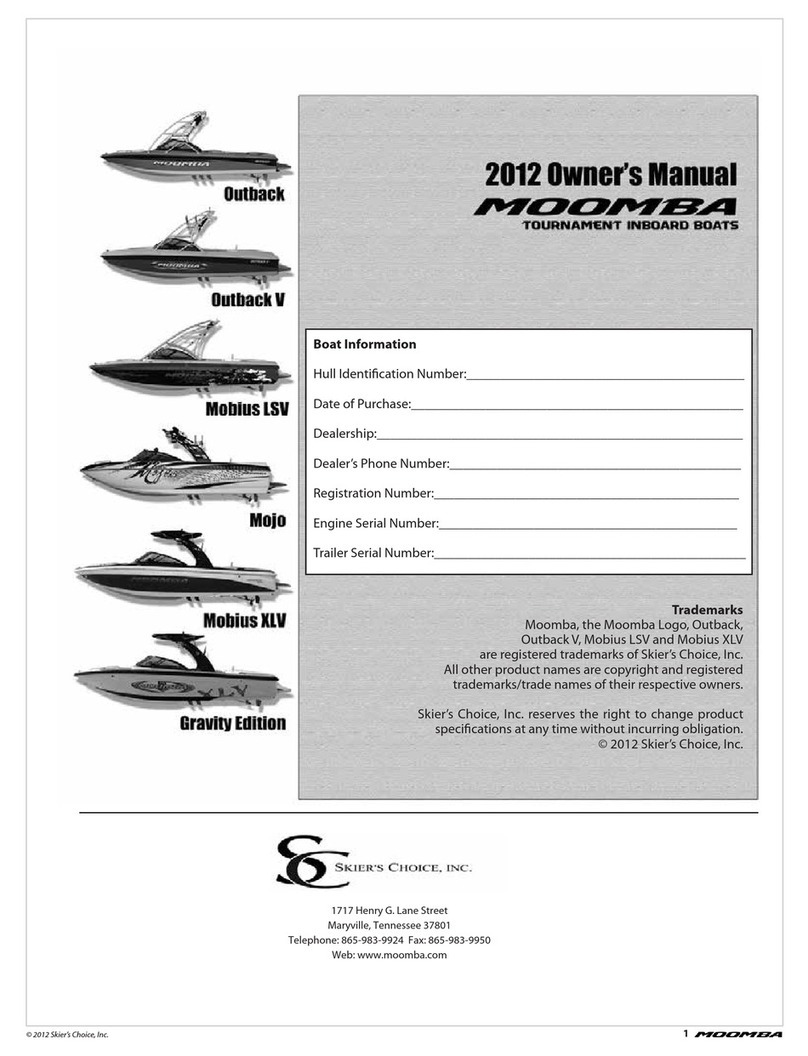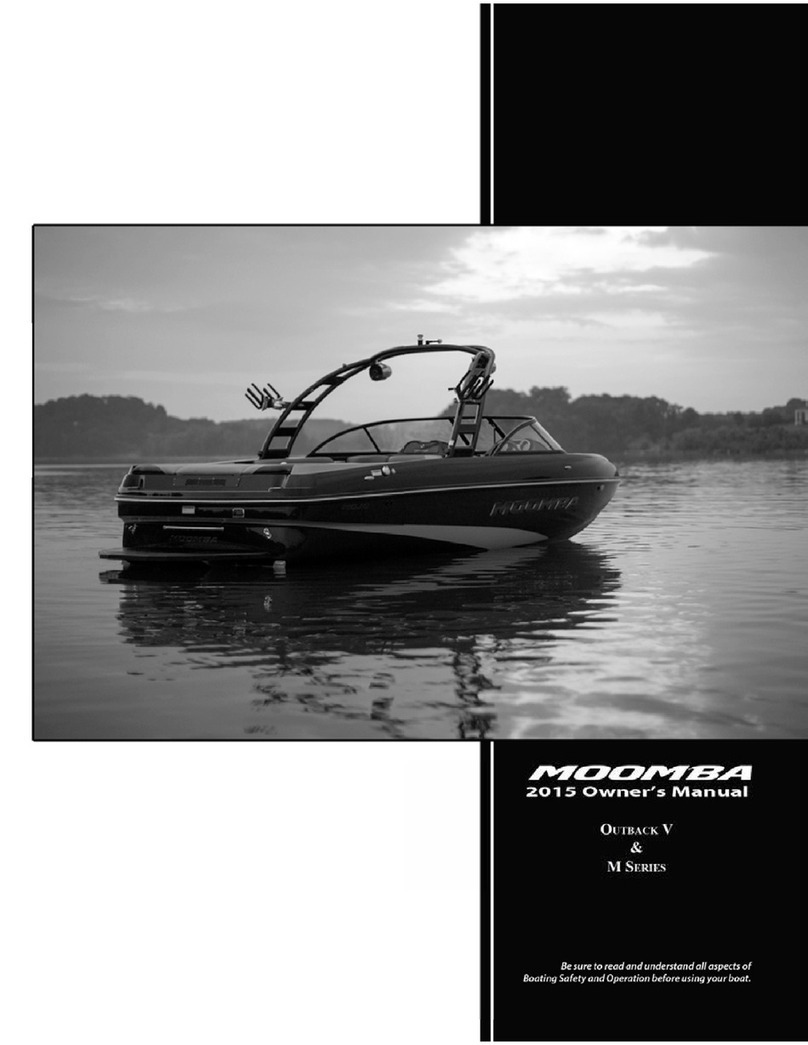
7
© 2007 Skier’s Choice, Inc.
Failure to adhere to these precautions may
result in severe injury or death to you and/or others.
- Improper operation is extremely dangerous. Operators
must read and understand all operating manuals
supplied with the boat before operation.
- Remain seated at all times while boat is in motion.
1HYHUVWDQGRUDOORZSDVVHQJHUVWRVWDQGZKLOHWKHERDW
is moving. You or others may be thrown from the
boat.
- Children in the bow of the boat should be accompanied
by an adult at all times.
1HYHURSHUDWHWKHERDWZKLOHXQGHUWKHLQÀXHQFHRI
alcohol or drugs.
- On-board equipment must always conform to the
governing federal, state, and local regulations.
- Gasoline vapors can explode. Before starting
engine, open engine box, check engine compartment
for gasoline vapors, and operate blower for at least four
minutes.
Run blower below cruising speed.
/HDNLQJIXHOLVD¿UHDQGH[SORVLRQKD]DUG,QVSHFW
system regularly. Examine fuel tanks for leaks or
corrosion at least annually.
1HYHURYHUULGHRUPRGLI\WKHHQJLQHVDIHW\VKXWRII
switch or engine neutral starting safety switch in any
way.
1HYHUUHPRYHRUPRGLI\FRPSRQHQWVRIWKHIXHO
V\VWHPLQDQ\ZD\H[FHSWIRUPDLQWHQDQFHE\TXDOL¿HG
personnel. Tampering with fuel components may cause
a hazardous condition.
1HYHUDOORZDQ\W\SHRIVSDUNRURSHQÀDPHRQERDUG,W
PD\UHVXOWLQ¿UHRUH[SORVLRQ
- It is the owner’s responsibility to check tightness of the
Rad-A-Cage Tower bolts BEFORE each use.
- The Rad-A-Cage Tower is designed to pull a single (1)
LQGLYLGXDO'2127FOLPERUVLWRQWKH5DG$&DJH
7RZHU5RSHPD\ORRSRQLQYHUWHGWULFNV'2127VLW
behind the pulling point of the Rad-A-Cage Tower.
General Safety Precautions
7RDYRLGVHULRXVSHUVRQDOLQMXU\'2127EHRQRU
about the swim platform while engine is running and
keep away from rear of boat while engine is running.
7RDYRLGVHULRXVSHUVRQDOLQMXU\'2127RSHUDWH
engine while anyone is on or about the swim platform
or in the water near the boat.
- The tow bar is not designed for vertical extensions.
$Q\PRGL¿FDWLRQVWRWKHWRZEDURULWVPRXQWLQJVPD\
result in damage to the boat and injury to the user.
- Rear storage area is located above the gas tank and is
QRWGHVLJQHGIRUEDOODVW:HLJKWOLPLWLVOEVHTXDOO\
distributed.
- The Rad-A-Cage Tower may strike low objects. Check
clearance height around docks, shore, overhanging
objects, bridges and power lines.
- Do not pull past 45 degrees of the centerline of the
boat. Failure to follow this rule could result in the boat
capsizing.
General Safety Precautions (continued)
- It is the driver’s responsibility to ensure all passengers
are seated when boat is underway.
Failure to adhere to these warnings may result in severe
injury or death to you and/or others.
- This boat is a high-performance boat and capable of
quick and tight turns and changes in direction. It is the
driver’s responsibility to operate the boat in a manner
to ensure the safety of all passengers.
Boaters must continuously be aware of weather
conditions.
- Sudden storms, wind, lightning, etc., can unexpectedly
put boaters in grave danger. Always check the local
weather report before going boating.
It is the driver’s responsibility to determine if weather
or other factors have created an unsafe boating
environment.
- The driver is solely responsible for the consequences
of their actions.
https://www.boat-manuals.com/







